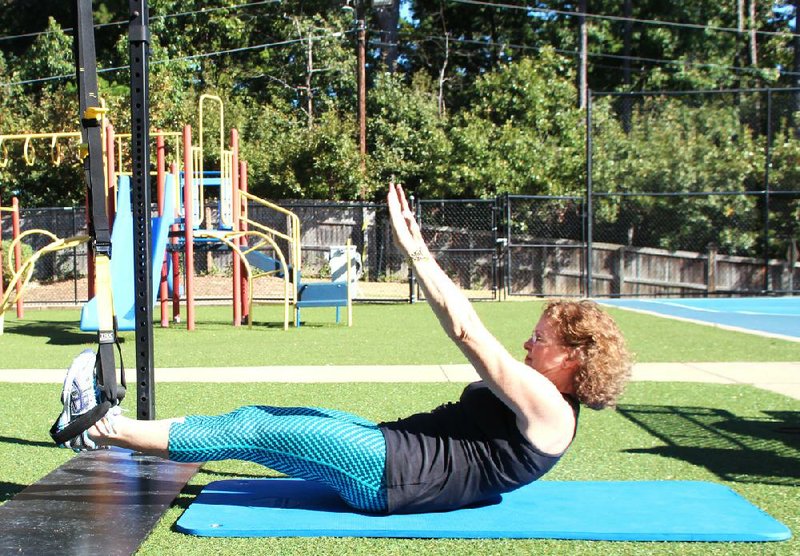Suspension training has gained so much, uh, traction throughout the fitness market that it behooves us to think about it once in a while.
This unique form of exercise lets people do resistance training almost anywhere, thanks to some handy dandy straps.
This week, I'll discuss what the kinetic chain has to do with the use of suspension straps, and I'll introduce an exercise that highlights an advantage of the straps.
First, a kinetic chain is a chain of joints that are connected so that a limit in one area can affect free movement in another. For instance, the foot bone is connected to the ankle bone and the ankle bone is connected to the shin bone and the shin bone is connected on up the kinetic chain so that a tightness at your hips could make your ankle sore.
The next thing to know is that there are "open" and "closed" kinetic chain movements. A closed kinetic chain exercise is defined as having an extremity fixed in constant contact with an immovable surface -- for example, your foot touching the floor. A barbell squat or a pushup would be an example of closed kinetic chain movement, because the active extremity is pressing against something that can't move away.
Conversely, an open kinetic chain exercise is defined as having an extremity that moves freely in space, not touching any immovable objects. A dumbbell bicep curl or a dumbbell overhead press are typical open chain exercises.
Open and closed kinetic chain movements are both useful. In some cases, one or the other could be safer, and if someone has joint pain or a previous injury, he should select exercises recommended by a fitness professional. But open chain exercises ask more from stabilizing muscles, tendons and ligaments, and so are a great choice for a healthy person looking to improve balance and control.
Suspension training maximizes the use of open chain movements because the straps allow freedom of movement in the vast majority of the exercises performed. This gives suspension training a distinct advantage over traditional strength training. And the functional nature of suspension training ensures that core muscles are more active than they can be during traditional methods of strength training.
This week's exercise uses suspension straps to maximize core engagement. The TRX Situp is a fantastic way to challenge the abdominal group while using an open chain movement in a safe and effective way.
1. Anchor TRX straps and place an exercise mat below them so you can lie on the mat with your feet in the strap handles.
2. Swing your arms forward until they are in front of your shoulders.
3. Slowly curl your shoulders and torso off the floor into a situp.
4. Extend your arms up toward the ceiling as you contract the abdominals.
5. Curl down slowly and return to the starting position.
6. Do two sets of 12 repetitions.
If you press your heels down against the straps during the situp, you'll also minimize the hip flexor involvement. This will allow you to focus on working the abdominals for a controlled and effective challenge.
I predict this open chain movement will be a nice change of pace for those looking to add a little spice to their abdominal routine.
Matt Parrott has a doctorate in education (sport studies) and a master's in kinesiology and is certified by the American College of Sports Medicine.
vballtop@aol.com
ActiveStyle on 09/29/2014
